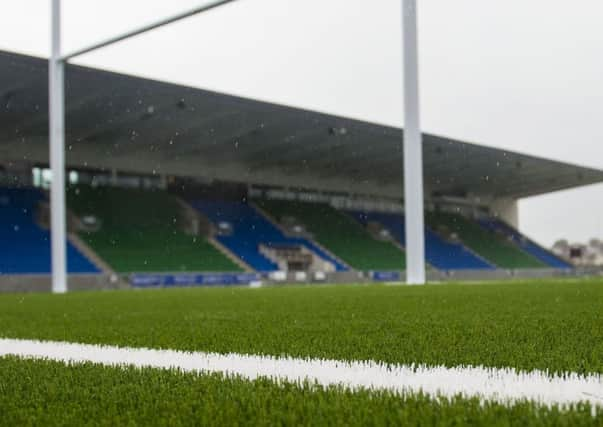Increase in rugby injuries on artificial pitches, report reveals


It was the standout detail from what is the most comprehensive study of its kind in the rugby world.
But the report, jointly compiled by the RFU and Premiership Rugby with data taken from the 2016/17 season, also threw up another startling revelation. For the first time, “the incidence and burden of match injury on artificial turf was significantly higher than that of natural grass”.
Advertisement
Hide AdAdvertisement
Hide AdThis is worth further examination and that is exactly what the RFU and Premiership Rugby Limited intend to do, especially now that three of their members, Newcastle Falcons, Worcester and Saracens all play on artificial grass pitches (AGPs).
The first thing to note is that, over the course of four years that the survey has dealt with artificial pitches, the frequency and severity of injuries on the AGPs is not statistically different to those played on grass. Over the first three years the numbers were slightly lower on AGPs so the spike of injuries in 2016/17 may be just that, a statistical anomaly, but it is worrying.
In season 2016/17 the incidence on injuries on grass was 89.6 per 1,000 hours compared to 95 per 1,000 hours on AGPs. The average severity of grass injuries was 32 days compared to 37 for AGPs. Put the two together and the days lost to injury on grass number 2481 per 1,000 hours played compared to 4740 per 1,000 on AGPs.
The figures were broadly reproduced when it came to training injuries, AGPs coming out worse for both number and severity.
This is important. If 25 per cent of the Aviva clubs (three) play on AGPs then 50 per cent of the Scottish pro teams do (Glasgow Warriors at Scotstoun). Add into the equation the AGP at Oriam, where Currie recently played Heriot’s, and where the national team regularly train and don’t forget the AGP at Murrayfield which is well used, especially by regional and national age grade teams.
AGPs are an obvious solution to Scotland’s bitter winters and Scottish Rugby chief executive Mark Dodson has suggested that he envisages the Super 6 franchises all playing on AGPs eventually.
The overall injury figures in the report are a disgrace to the game which accepts a stratospherically high rate of attrition because it won’t take the necessary steps to halt rugby’s arms race by curtailing the use of substitutes. (If a player has to last 80 rather than 50 minutes then he can’t be the size of a house).
Given the increase of injuries on AGPs during season 2016/17, Murrayfield will be reading this report with some alarm and waiting for next year’s summary with fingers crossed that this spike of injuries on artificial pitches is a one-off and disappears as fast as it arrived.